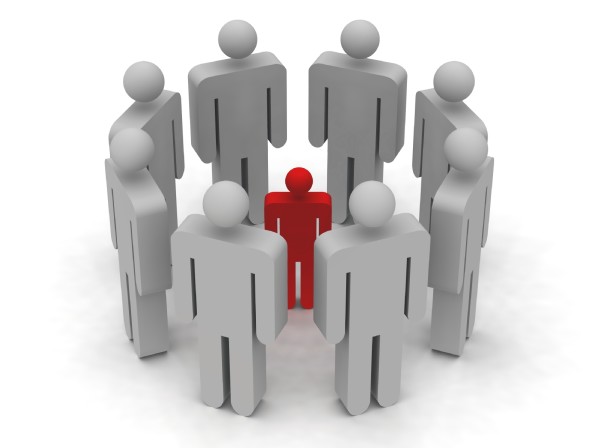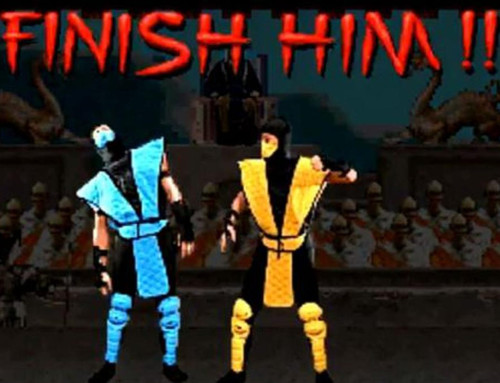A lot has been made of bullying in recent years, bringing to attention some of the issues that many youth have to deal with. As with anything that gets brought to our attention, the issue explodes and fingers are pointed all over the place, and everyone has an opinion on how to fix it. And, well, I’m no different. Before I give my opinions on the matter, however, I find it necessary to point out what real bullying is. It seems, much like the word terrorism got used to describe any and all crimes committed shortly after 9/11, the word “bullying” has seemed to have replaced such things as hazing, ribbing, and teasing among other things even though they are not the same.
What is bullying? Essentially, it’s someone who is habitually cruel to another. Whether it is to get what they want, or to simply put down another person. Yet, the word gets thrown around for just about anything nowadays. A child gets laughed at for having gum in their hair and it’s considered bullying. I had a student one time complain that he was being bullied by another student. The accused bully was the nicest kid in class. Needless to say I was baffled. Come to find out, the one crying “bully” was actually calling the nice kid a bad name, and when the nice kid said the exact same thing back to him in retaliation, he couldn’t handle it and cried out “bullying”. Retaliation isn’t bullying. Not that it’s good to do, but it’s not bullying. Yet, despite trying to explain this to the parents, they both freaked out when they heard the word “bullying”. And I, subsequently, was thrown into an hour long meeting with both parents. It also seems we’ve gone to great lengths to try and stop any child from saying anything negative towards another child whatsoever. But isn’t that how we keep others in check? Shame? I seem to recall being a bit overbearing and controlling with some of my friends when I was younger, and not overly nice. I had no idea I was being a jerk. They told me, but I thought they were just joking with me. Then one punched me in the face a few times and I got the message, and we went back to being friends. While there could have been numerous better ways of getting that message to me, the fact is, it worked. Shame is a great equalizer and how society tends to get people to conform without excessive violence or restrictions. Not to mention keeping the seemingly “untouchables” (such as politicians) somewhat in line.
Of all the things that parents of my youth students could have concerns about when it comes to their children, the thing I hear the most is about their kids being called names or being made fun of. While these are legitimate concerns, it always ends with me finding out that the kid that was called names was being a butthead to the other kids, so the other children shunned or shamed that child until he/she stopped. I’m not saying I condone name calling, I don’t, but kids aren’t exactly masters of diplomacy. Name calling is generally their first line of stopping undesired actions of another child. My point being, this isn’t bullying. Bullying is a completely different monster and needs to be approached differently. Knowing the difference between bullying and teasing or shaming is crucial as they come from completely different areas. A child who occasionally teases another or uses shaming in hopes to stop another’s behavior just needs to be corrected and made aware that their way of dealing with issues needs to be adjusted. These are not bad kids with social disorders or issues. Bullying on the other hand can be the result of large issues at home or elsewhere that manifest themselves into bullying behavior.
So what causes a child to be a bully? There are many different scenarios that cause a child to bully another. In some cases it can be temporary, in others it can be a life time of this behavior. Many kids act as a bully at times throughout their childhood or as an adult. For them, simple discipline and awareness of their actions are enough for correction. A little bit of power can make anyone slip up and act as a bully at times. Also knowing that society in general tends to give more attention to those who do wrong and cause problems than those who do right. This attention, even from a bad action, is desired. It is crucial that we give just as much attention, if not more, to those who are behaving correctly. For a select few, those that tend to be engrained to bully, simple discipline isn’t enough. These children tend to have much deeper issues that lead them to bullying. For some, it’s a lack of family involvement at home or possible abuse. This abuse or lack of affection can be passed on to their peers. Sometimes not even on purpose, but from a lack of understanding how affection and caring are shown as they have no examples at home. For some, a “social rejection” can lead to bullying behavior, as they seek recognition and power that they are unable to attain in other forms such as good grades, sports or popularity. Another thing to remember is that being controlling, especially in a violent way, is how we survived throughout our history, the survival of the fittest. There was no diplomacy or asking for permission, simply doing what it takes to survive. As I’ve mentioned in previous articles, we are a very violent creature and our violence must come out in proper ways and taught proper ways of dealing with others. Some suggest exposure at a young age (even as a 1 year old) to violence, be it real violence or on tv/games, may desensitize youth to violence and allow it to be acted on easier.
What can be done about it? There are two things that must be focused on, the bully and the victim. Many studies have suggested that both bullies and victims tend to sprout from the same seed, albeit at the opposite ends of the spectrum when it comes to their actions. In many cases, both have been known to have family conflicts and have difficulty with problem solving skills in social situations. One will lash out with violence to control what they struggle with while the other pulls back and shy’s away from these situations. Therefore, it stands to reason that what helps one might help the other to an extent. Being a martial artist, obviously my answer is going to be martial arts. But what is it about martial arts that helps calm bullies and helps give confidence to victims? For starters, being a martial artist is being a part of a group that not a lot are a part of and a family-like atmosphere. What do many bullies and victims struggle with? Being a part of groups and having a proper functional family atmosphere. Martial arts also teaches problem solving skills in social situations. Students must rely on each other for progress; they must communicate, trust and support their fellow martial artists. There’s another thing that happens while in martial arts that involves learning about yourself. For bullies, they find out they can’t control everyone through threats and that they aren’t as tough as they thought, and it tends to humble them as they start to feel the same helplessness the victims feel when they can’t control a situation that makes them uncomfortable. Then once they are humbled, they are brought back up through confidence and respect they start to get from doing the right thing and working hard, and not from violence and threats. They are suddenly being recognized and rewarded for their good behavior and not recognized through punishment of bad behavior. For the victims, they begin to see just how strong they really are. They are so used to being told how weak they are, they don’t realize their strengths, and therefore have no confidence. Martial arts helps them find those strengths as well as strengthening their weaknesses. I’m not just talking physical here either. For some it’s their intelligence, or the creativity, or their leadership abilities. There are numerous different ways a person can be strong. At higher ranks students are put into leadership roles in which they have to properly lead a class room. For bullies, they learn that proper leadership is done through respect and setting good examples, not through threats and violence. For the victims they learn that they do have the strength to lead and that others do respect them when they begin to respect themselves. I’ve watched numerous bullies and their victims walk into my classroom and within a reasonably short amount of time, walk out friends. Sometimes, it happens the very first class. The power of wanting to be a part of something is huge. Both the bully and the victim walk into that martial arts studio knowing no one. Then they see a familiar face. It doesn’t seem to matter that they didn’t get along outside of the studio, because the devil you know is better than the devil you don’t. And when you take the time to get to know someone, it’s hard to not, at the very least, have respect for them. We’re a social creature, some of us just suck at being social, but that doesn’t remove that urge and that need to be social, and a part of something.
What about sports? Don’t sports promote much, if not all of the same confidence, social interactions, and leadership skills? Absolutely! The problem, however, is that you must be good at the sport in order for many of these aspects to work. Only the best players get playing time, or even on the team. This isn’t the case in martial arts. You don’t need to be the best, or even good, to build these same skills. Martial arts is about personal development, you’re only at competition with yourself. If you choose to do sport martial arts, that’s great, but it’s not necessary to build these skill sets.
I’m not suggesting martial arts is the only way to help lower the bullying that goes on. There are numerous things that can be done, in particular by the families. Instilling discipline into children and teaching them right from wrong. Both telling and showing them you love and support them, but at the same time will correct them when they step out of line. Unfortunately, these things aren’t being done by enough parents. We let our young children sit and watch violent movies and play violent video games and laugh when they punch and kick their older siblings or family members, but then are shocked when they do the same thing to children their own age and it ends in a bad way.
Our society is growing increasingly dependent on other people to raise our children. Yet we drain recourses (money) from our schools and tell them they can’t do anything but report what’s being done to a supervisor, who in turn, reports it to the family, who then does nothing about it. This system does not work. It starts in the home, and then added to in the schools, athletics and martial arts facilities, and then brought back home yet again in order for progress to be made. We also must focus on both the bullies and the victims, not just one. As usual, it’s not just one thing that needs to be fixed, it all must be improved.
We’re a nation of finger pointers thinking that one thing is the problem and that one thing will be the solution, and that just isn’t true. We need to let go of our sheep-like minds that only listen to our political parties or religious figures that tell us the other group is always to blame and see things for ourselves and do what we feel is best for us and our community. As we are all equal cogs in the machine that makes society work, and if one part is broken, we must not blame others, we simply need to fix it. If not, it all falls apart. We can’t let egos and “who’s right/who’s wrong” delay or distract us from the true problems and true solutions.







Leave A Comment